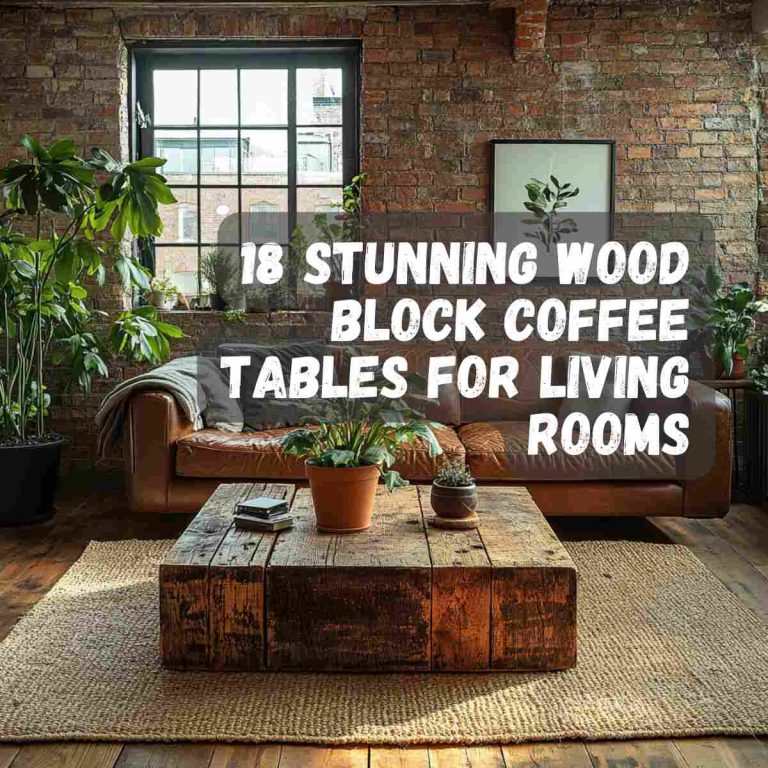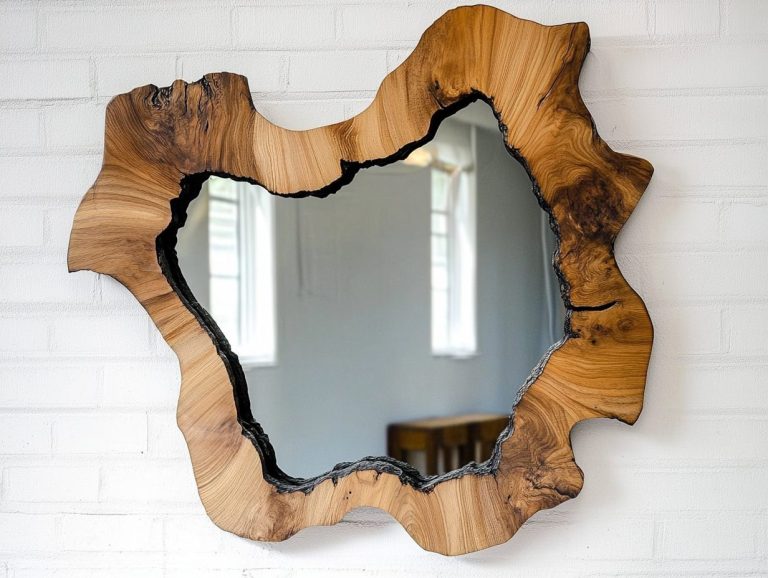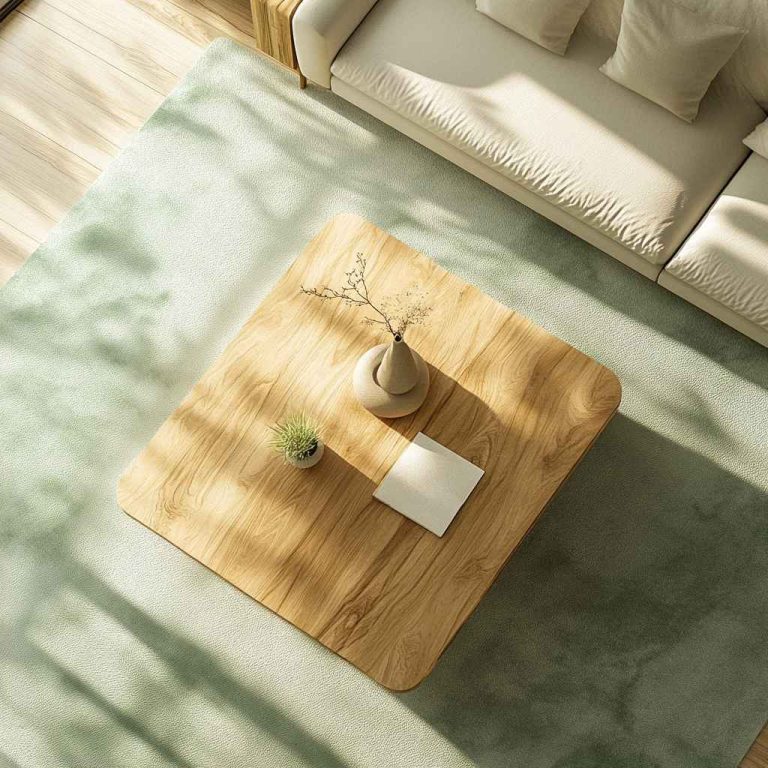Creative Concrete Landscaping Tips for a Low-Maintenance Garden
Gardens are often seen as tranquil escapes—little slices of paradise where beauty meets serenity. But let’s face it: not everyone has the time or energy to keep up with the endless weeding, pruning, watering, and replanting. That’s where concrete landscaping becomes a game-changer. Far from being a dull or purely functional material, concrete has evolved into a star player in landscape design—offering durability, versatility, and minimal upkeep.
This article walks you through creative concrete landscaping tips to help you craft a beautiful, low-maintenance garden that remains lush, organized, and effortlessly stylish year-round.
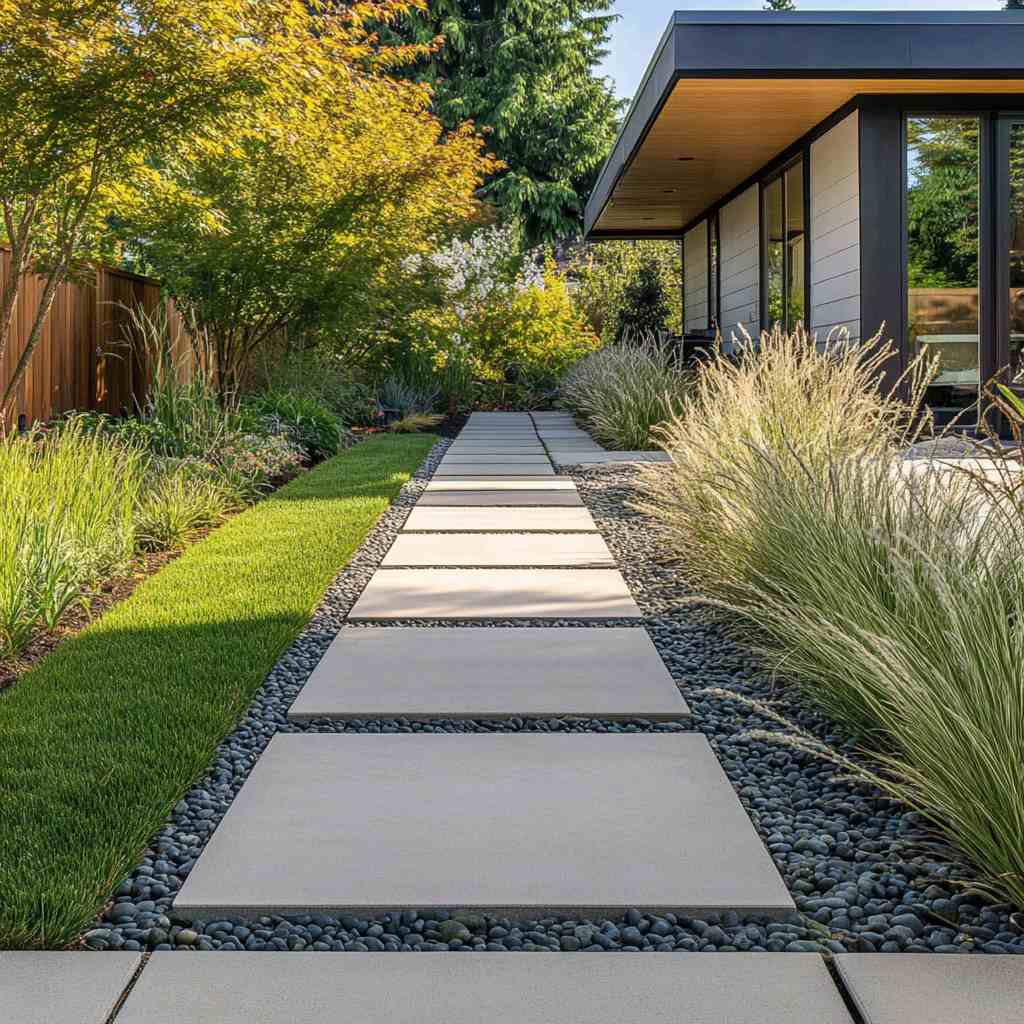
Why Concrete is Perfect for a Low-Maintenance Garden
When you think of concrete, your mind may first wander to sidewalks or driveways. But modern landscaping turns this humble material into a design tool that’s as aesthetic as it is practical. One of the biggest advantages of concrete in landscaping is its durability—it resists weathering, pests, rot, and erosion far better than wood or natural stone.
Additionally, concrete requires minimal care. You won’t have to repaint, reseal, or weed between joints frequently. With today’s advanced treatments and finishes, concrete can mimic stone, tile, or even wood, making it suitable for all kinds of themes—from minimalistic Zen gardens to lush tropical patios.
Stylish Concrete Pathways and Walkways
One of the first areas to consider for concrete incorporation is the garden path. A well-designed pathway not only guides foot traffic but also defines your landscape’s flow and structure.
Stamped or Textured Concrete: Gone are the days of plain gray slabs. Stamped concrete can replicate cobblestone, slate, or brick—adding charm while still being low-maintenance. You can even choose textures that resemble natural materials, giving the appearance of intricate stonework without the associated upkeep.
Curvy vs. Straight Paths: Curved paths offer a natural, relaxed look and are excellent for cottage or woodland-style gardens. Straight lines, on the other hand, lend themselves to modern or formal layouts. Either way, concrete delivers a clean, weed-free walking surface that won’t shift or sink over time.

Add Gravel or Grass Joints: For added visual interest and better drainage, consider alternating concrete slabs with gravel, pebbles, or creeping ground cover plants like dichondra or creeping thyme. These soften the look and reduce surface heat while keeping maintenance low.
Concrete Patios with Built-in Features
A concrete patio serves as the centerpiece of any outdoor living space. But it doesn’t have to be a monotonous expanse. Use creative forms and finishes to give your patio personality and purpose.
Built-In Seating & Planters: Seamlessly cast benches or planter boxes into the patio design itself. Not only do they save space, but they also eliminate the need for movable furniture or separate containers that require frequent cleaning and repositioning.
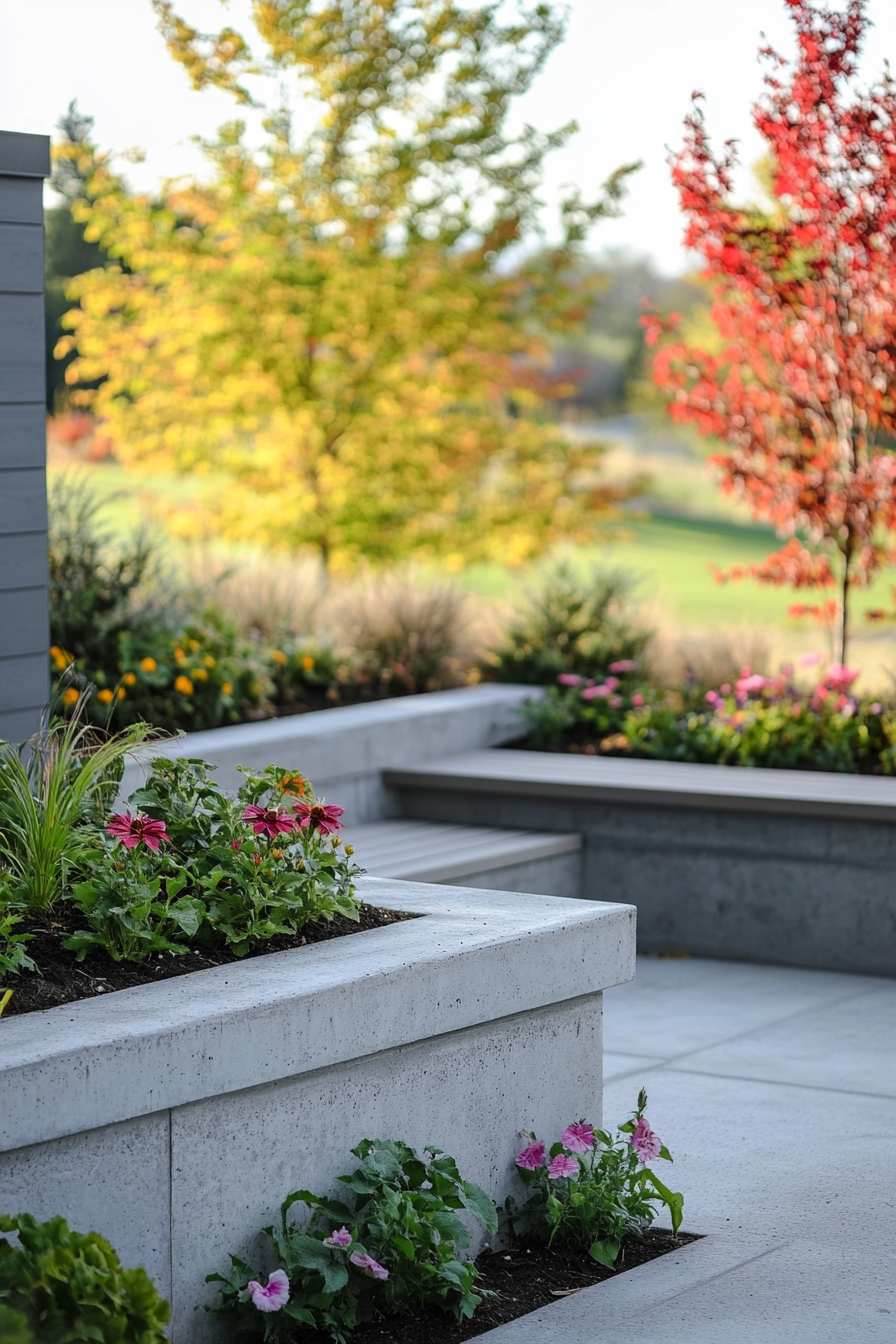
Acid-Stained or Scored Designs: Decorative concrete can be acid stained to produce rich, variegated tones or scored into geometric patterns for a more modern look. These finishes not only enhance aesthetics but also help conceal minor stains and wear over time.
Benefits of Sealed Finishes: A well-sealed patio is resistant to water, mildew, and stains. It also reflects less heat during sunny months, keeping your sitting area cool and comfortable.
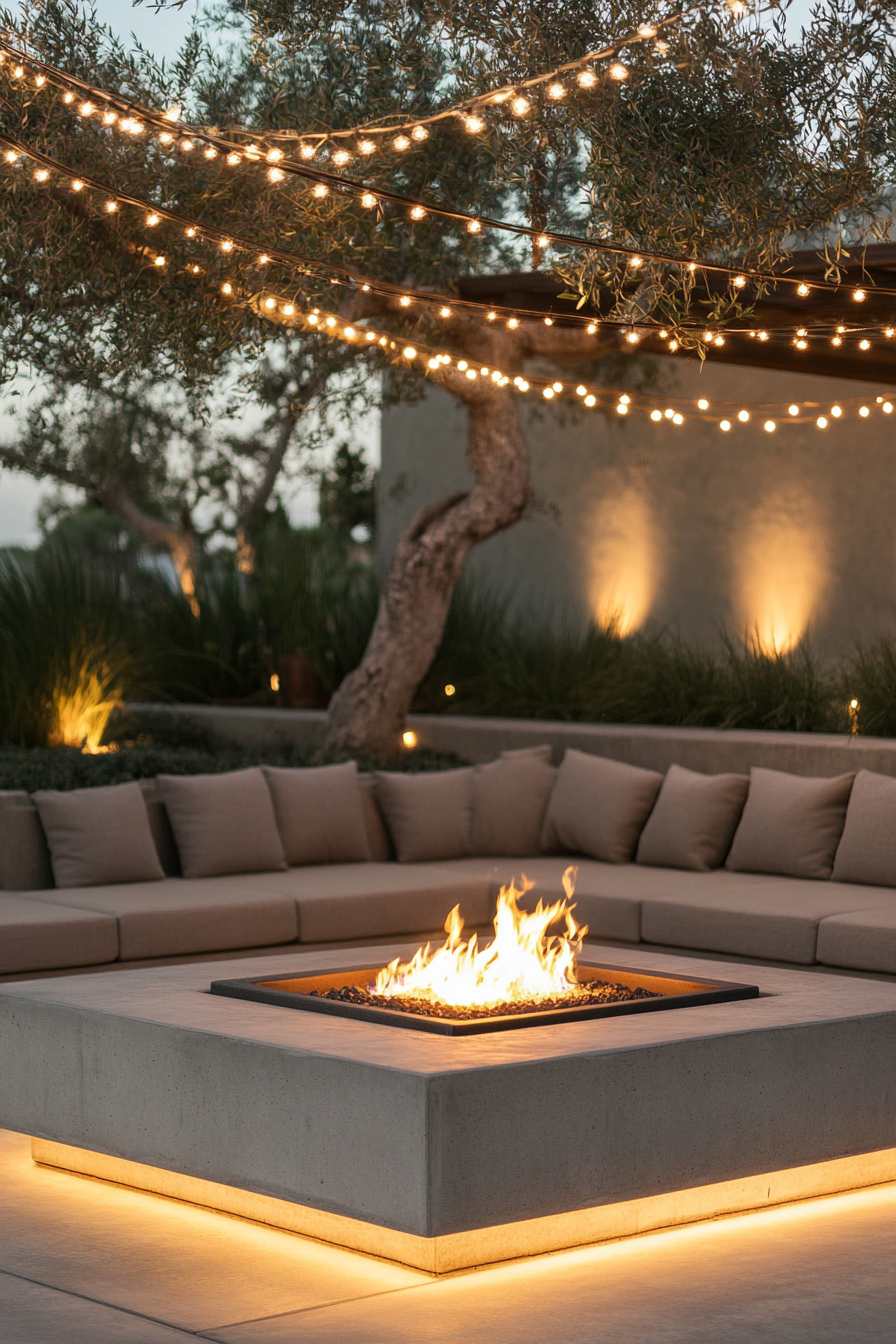
Concrete Planters and Raised Beds
Concrete planters are ideal for structuring a garden without the messiness of sprawling beds. Whether small or oversized, they create architectural rhythm and are perfect for organizing plants.
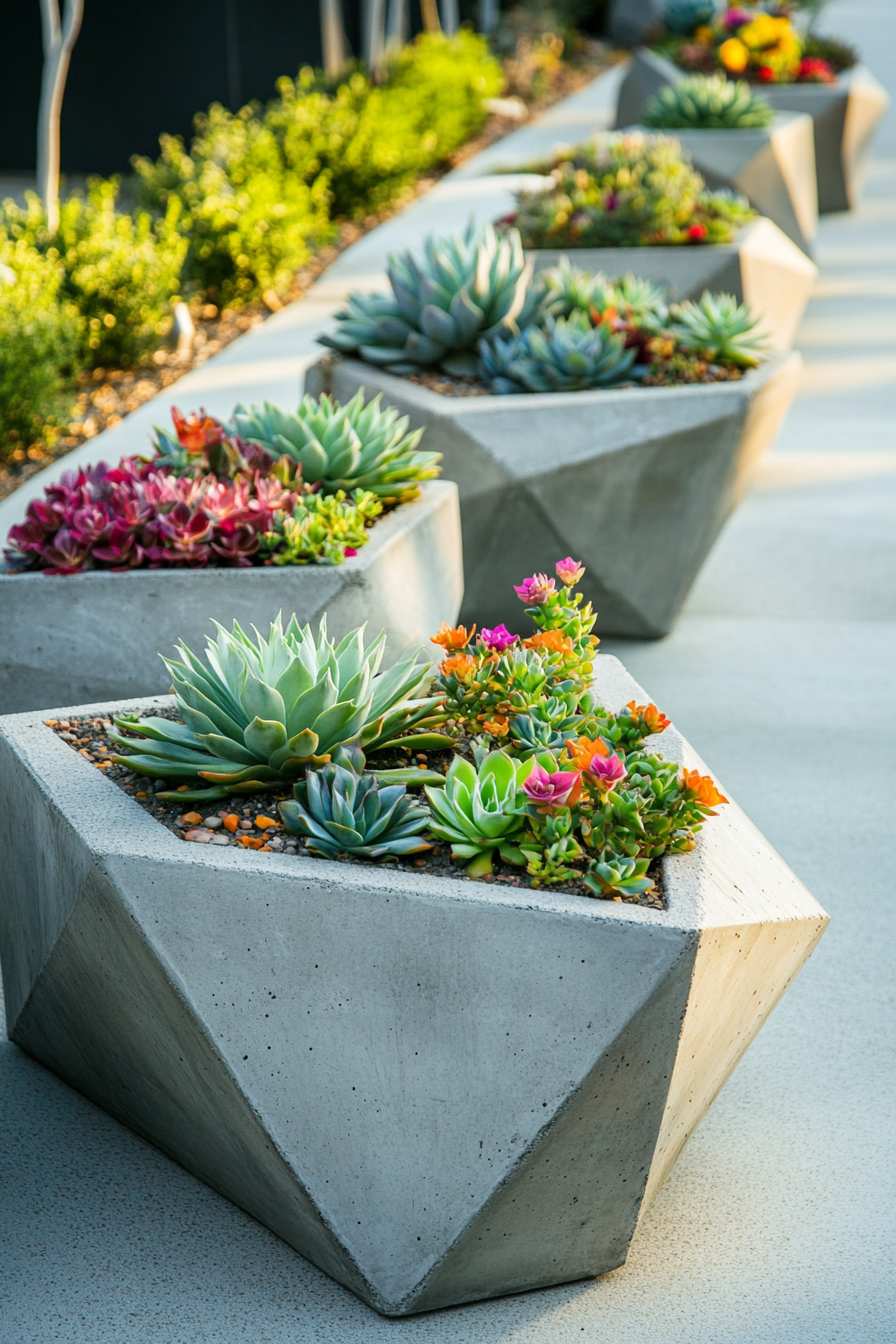
Water Conservation: Concrete retains moisture well and reduces water loss through evaporation, making it an eco-friendly choice in hot climates. You can pair them with drought-tolerant plants like succulents, lavender, or ornamental grasses for even less fuss.
DIY Customization: With a few inexpensive materials like plywood and molds, you can cast your own concrete planters in any shape—round, square, hexagonal, or abstract. Paint or seal them as desired, or leave them raw for a more rugged, industrial look.
Drip Irrigation Friendly: Raised concrete beds can easily accommodate embedded or surface-level drip systems that automate watering. Once installed, you’ll rarely have to touch them again.
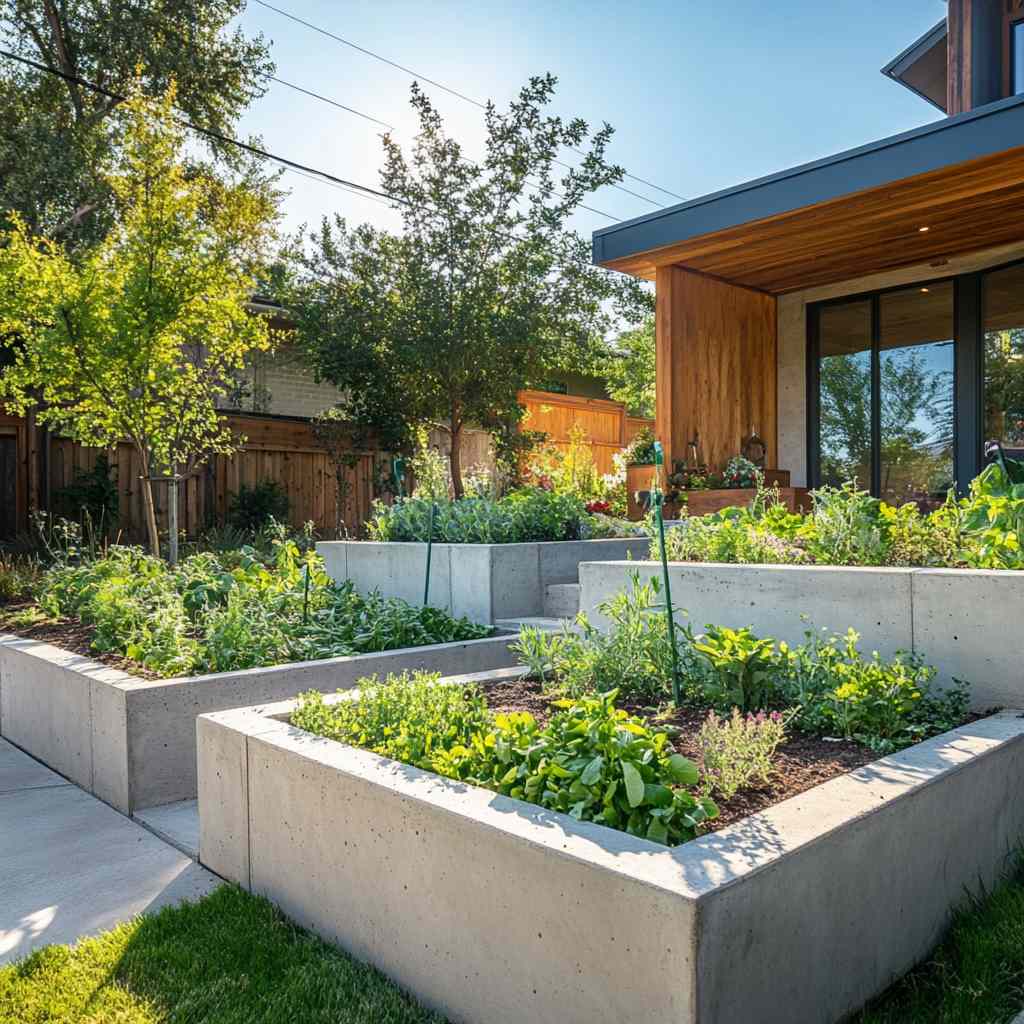
Concrete Edging for Clean Garden Borders
Another often overlooked yet visually impactful application of concrete is garden edging. Defined borders not only look neat but also prevent overgrowth and keep different areas of the garden from blending into one another.
Decorative Curbing: Choose from colored, stamped, or textured concrete curbing styles to match your garden’s overall theme. Whether you want a sleek urban feel or a more natural stone look, concrete delivers with minimal maintenance.
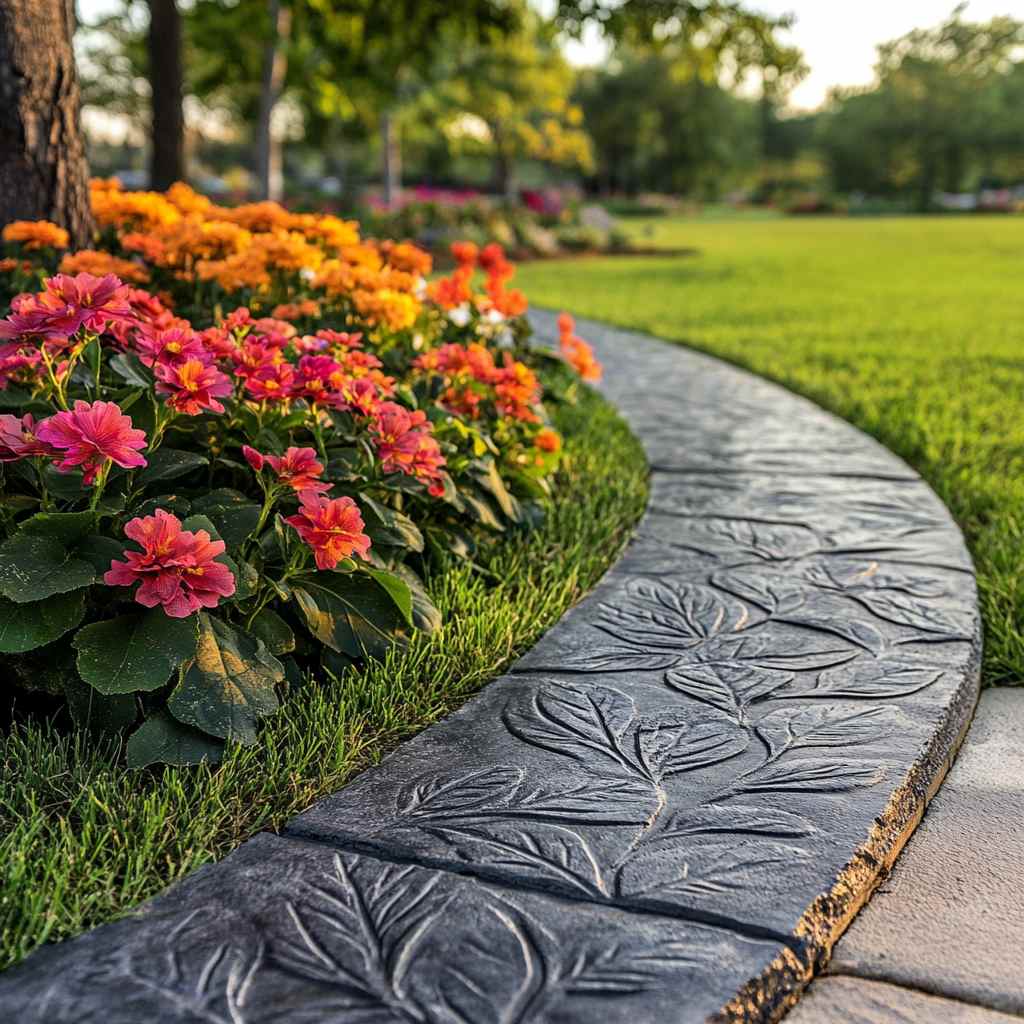
Function Meets Form: Concrete borders help contain gravel paths, separate lawn from flower beds, and guide irrigation flows. Once installed, they stay put for decades, unlike wooden or plastic edging that can warp, rot, or shift.
Minimalist Concrete Sculptures and Features
Concrete’s sculptural quality makes it perfect for adding focal points without cluttering the landscape. When every item in your garden is chosen intentionally, it creates a serene and visually cohesive environment.
Abstract Shapes and Orbs: Try using pre-cast spheres, cones, or minimalist sculptures to break up greenery. These draw the eye and provide visual balance, particularly in sparse or symmetrical layouts.
Contrast with Nature: The raw, cool texture of concrete pairs beautifully with soft green foliage and flowering plants. It enhances their colors while providing a structured counterpoint.
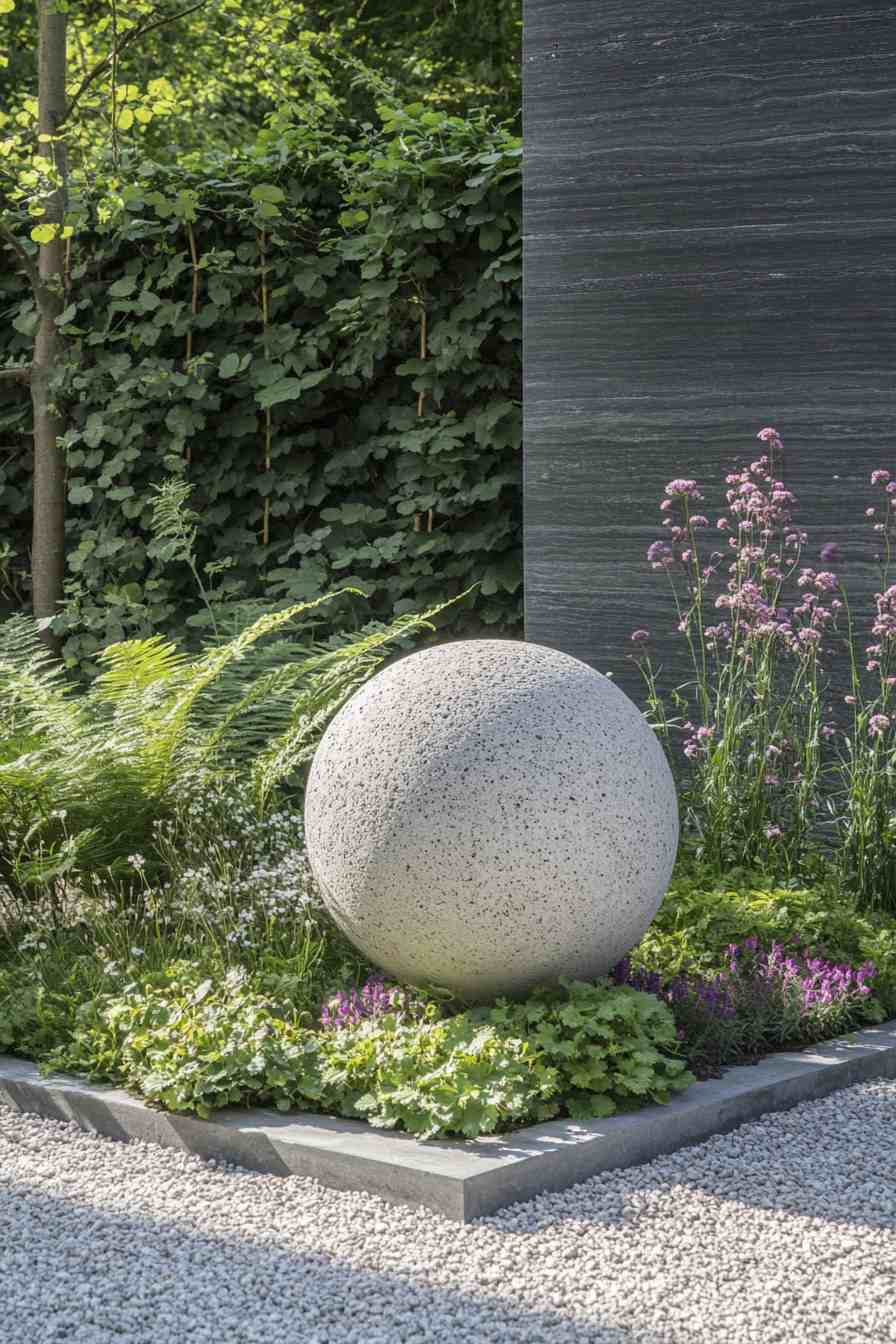
Lighting Integration: Some concrete features can also double as lamp bases or conceal lighting fixtures, adding ambience during evenings without additional wiring mess or fixtures to maintain.
Water Features with Concrete Bases
There’s nothing like the sound of gently moving water to create a peaceful retreat. And when it’s built on a concrete base, it becomes nearly effortless to care for.
Modern Fountains: Concrete allows for custom-cast fountains that are minimal in design but powerful in effect. You can go for tiered fountains, wall-mounted sheets of water, or basin bowls.
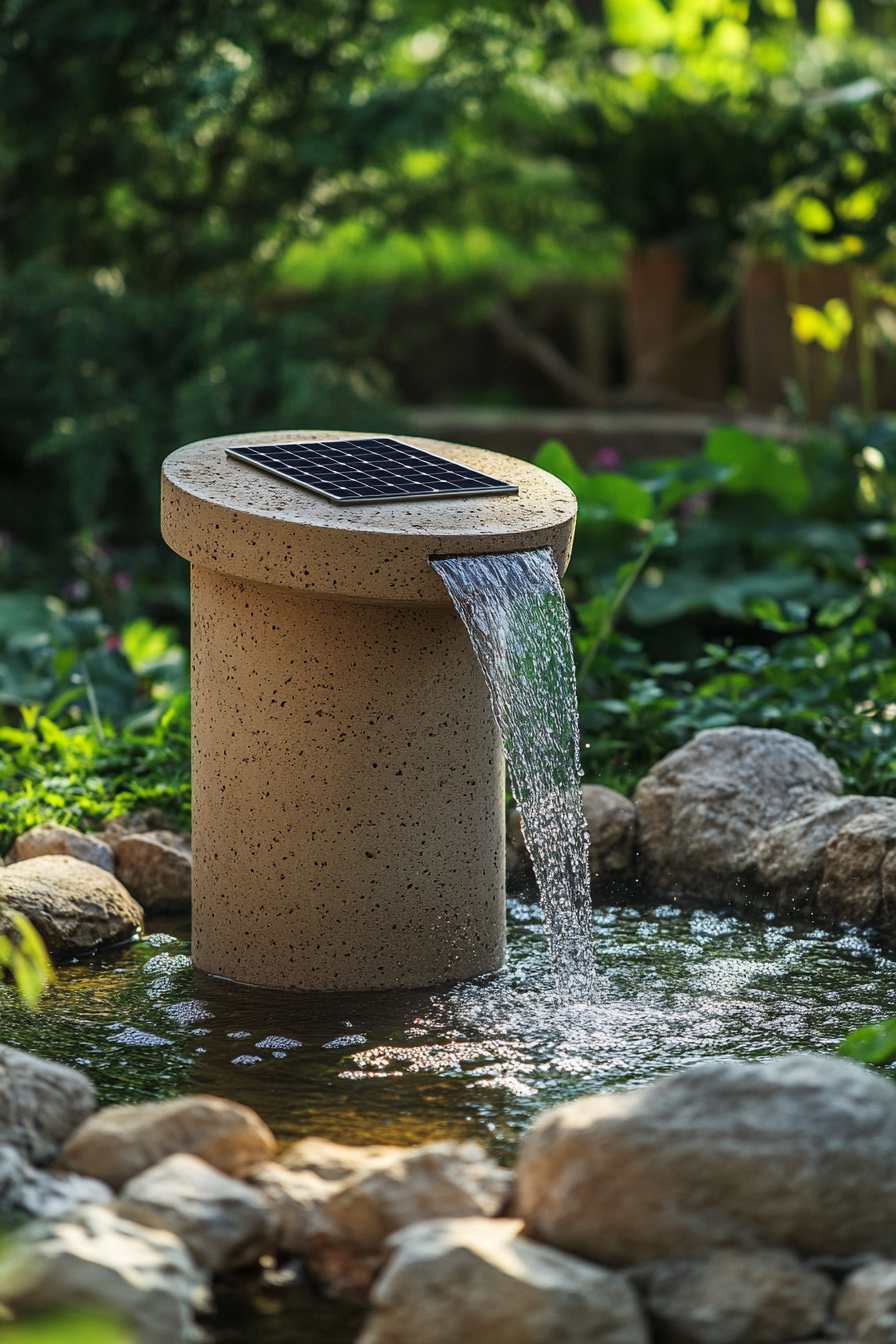
Birdbaths and Reflecting Pools: Use sealed concrete basins to invite birds, reflect the sky, or simply add serenity to your garden corner.
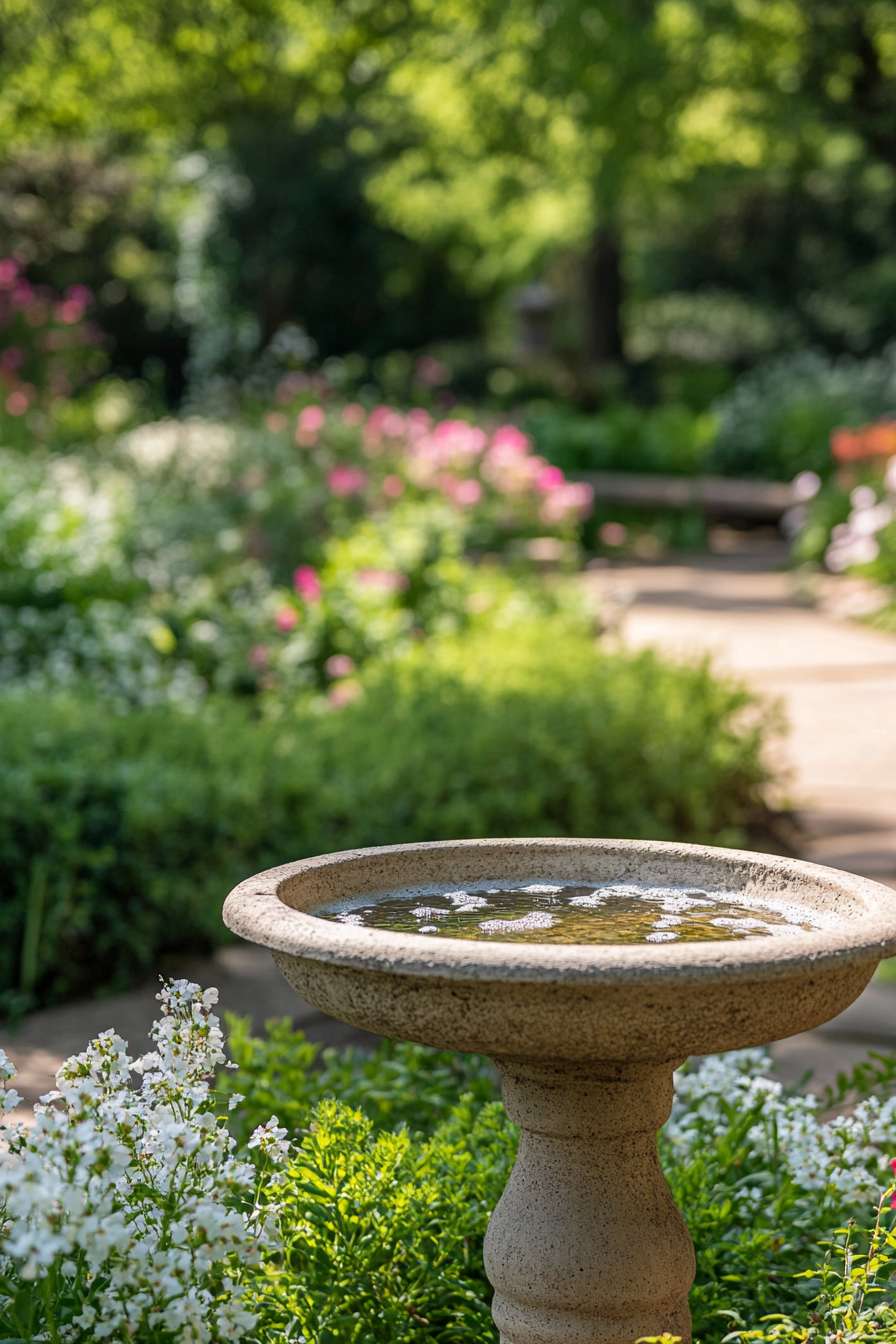
Low-Maintenance Systems: Pair concrete structures with solar-powered or recirculating pumps. They consume less energy and require far less cleaning than traditional systems.
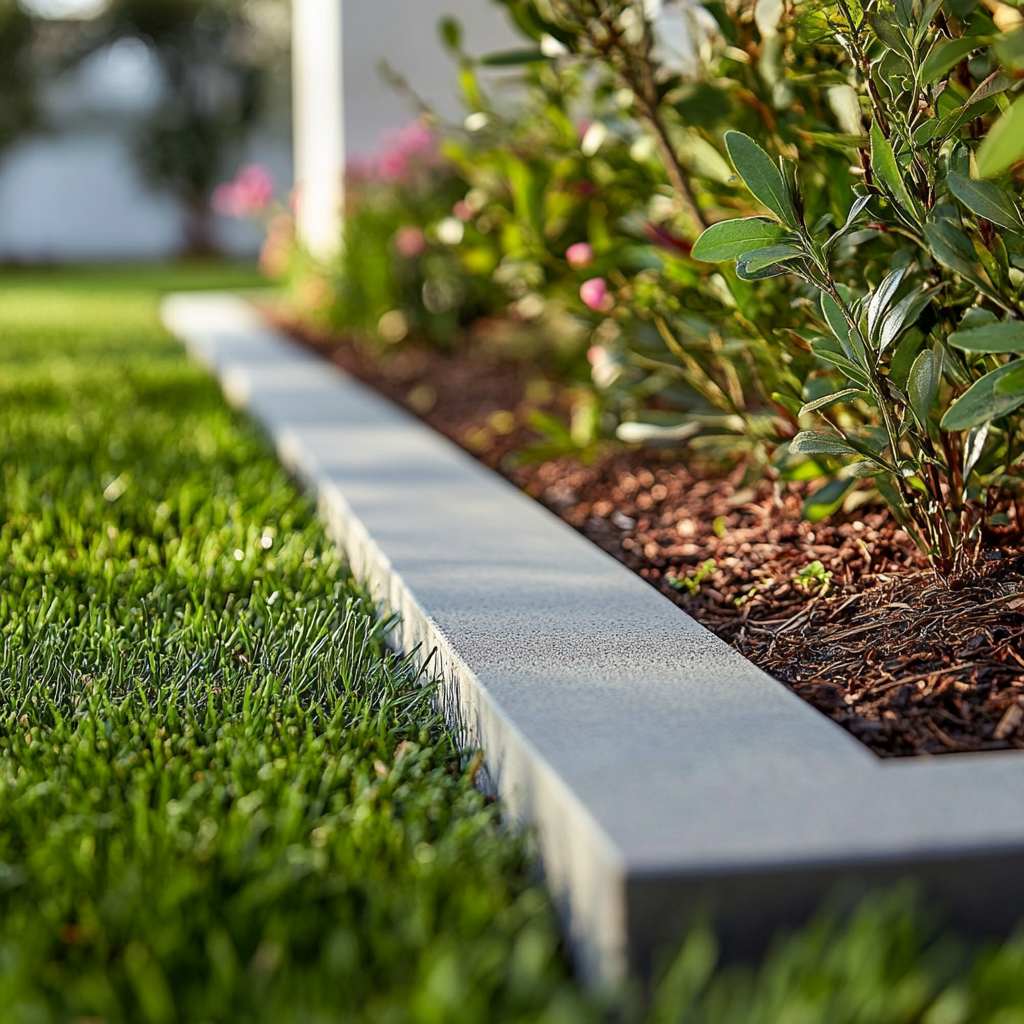
Coloring and Texturing Concrete Creatively
One reason homeowners love using concrete in landscaping is because it’s a blank canvas for color and texture.
Stains and Pigments: Iron oxide pigments or chemical stains can tint concrete in warm earth tones, rich charcoal hues, or even soft pastels. These won’t peel or fade easily.
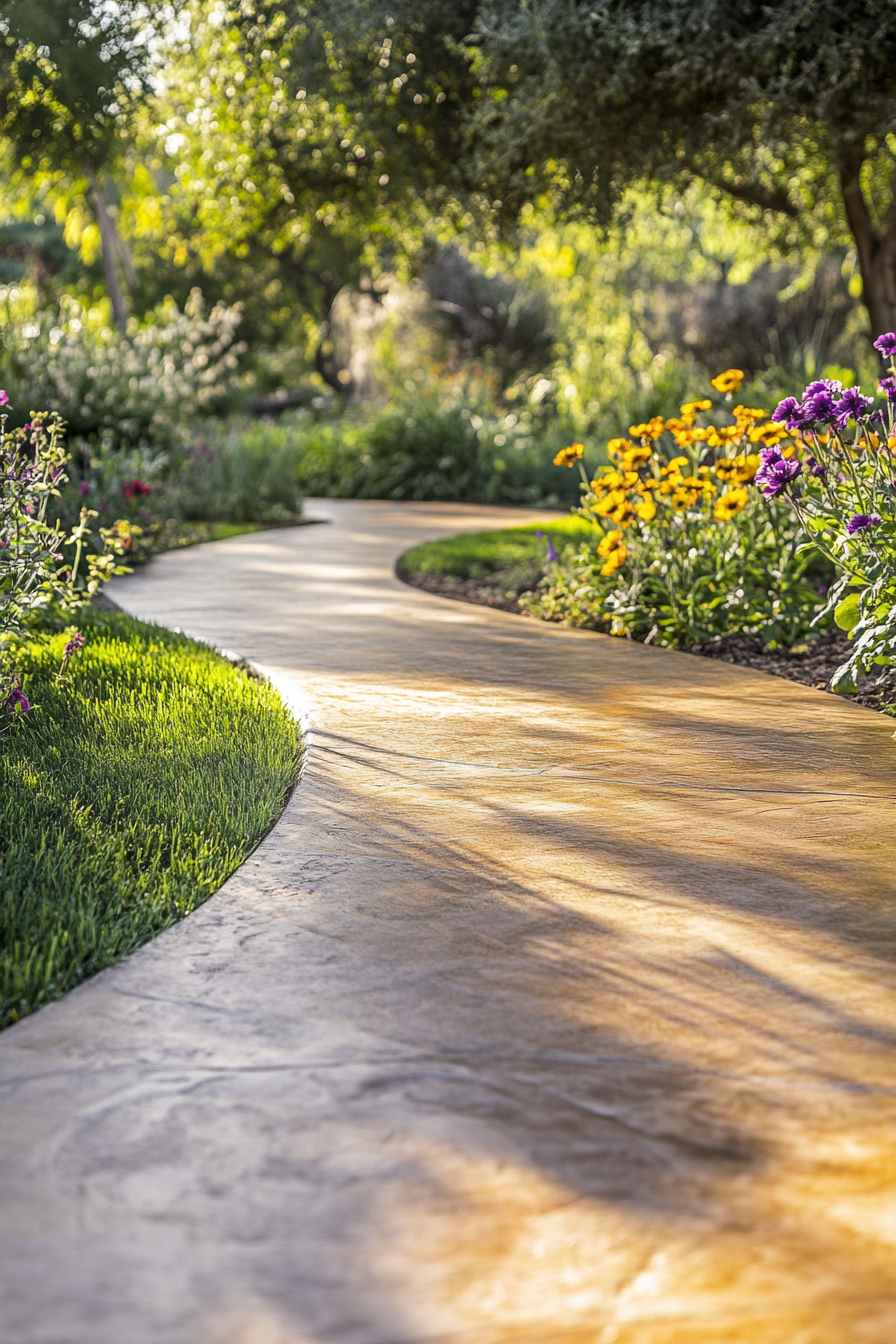
Textured Impressions: From broom-finished concrete for slip resistance to wood plank stamping that mimics deck flooring, the options are endless. These textures don’t just beautify—they add grip and hide dust or debris between cleanings.
Layered Finishes: Combine multiple techniques—like a pigmented underlayer and a hand-troweled top coat—to create dimension and movement on otherwise flat surfaces.
Smart Drainage Solutions Using Concrete
Concrete can also be used for functional infrastructure like drainage systems that help maintain a clean and dry garden.
Runoff Channels: Use narrow concrete trenches or V-shaped grooves to direct excess rainwater to safe zones or collection tanks.
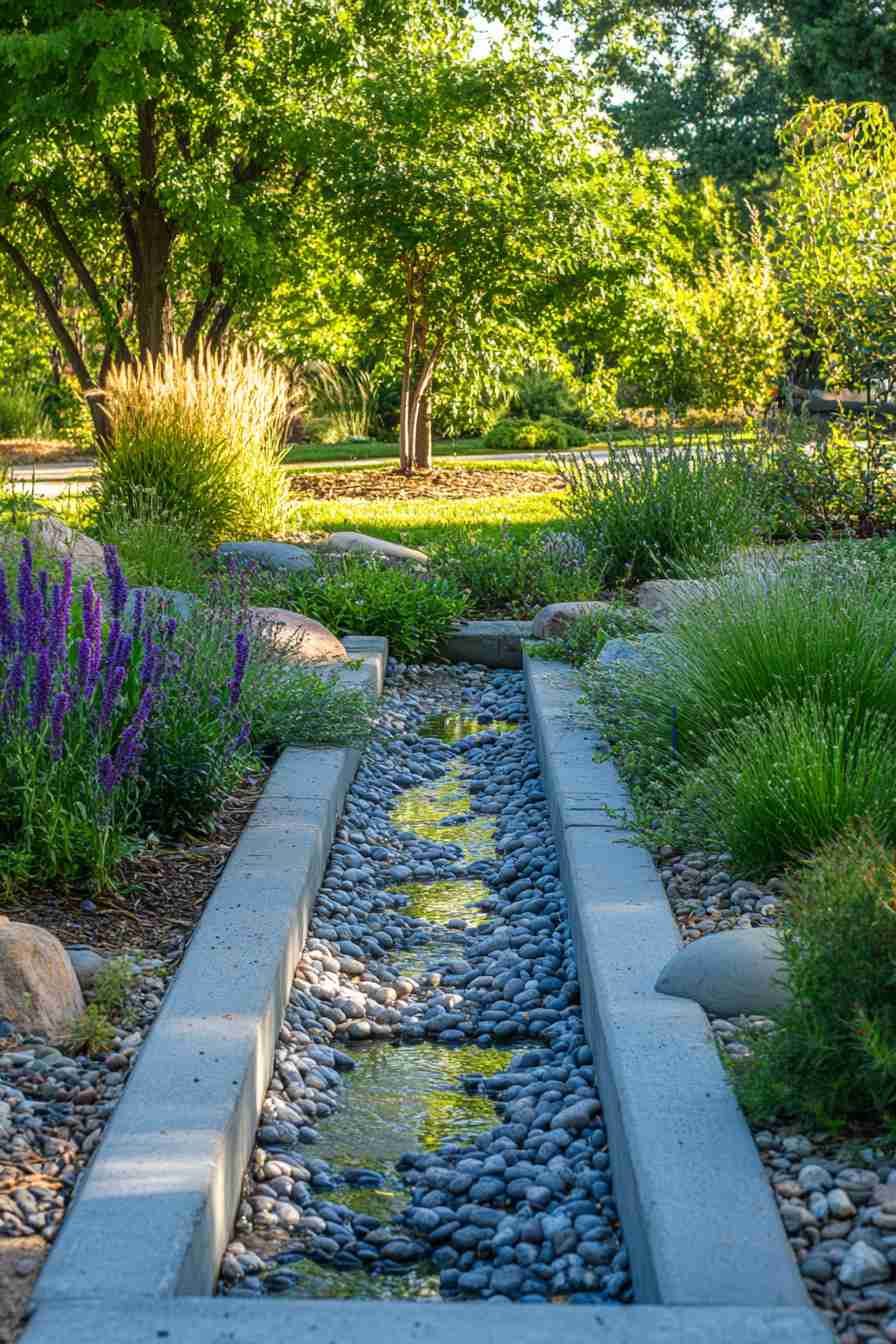
French Drains and Swales: Install permeable concrete blocks or combine gravel with concrete frames to create French drains that look intentional rather than technical.
Preventing Soil Erosion: Concrete retaining walls and slope stabilizers help manage high-gradient landscapes. Once set up, they require virtually zero maintenance and remain intact through all seasons.
Tips for Long-Term Maintenance
While concrete is naturally low-maintenance, a few preventive measures will ensure its beauty and functionality for years.
- Seal Surfaces Every few years, apply a penetrating sealer to protect against moisture, staining, and surface cracking.
- Power Wash Annually: This keeps surfaces clean and mold-free, especially in shaded or humid areas.
- Patch Small Cracks Early: Quick-fix caulks or resins can prevent minor cracks from expanding and save you from full replacements.
- Use Mats or Furniture Pads: Protect high-use patio areas from scratches caused by metal or wooden furniture.
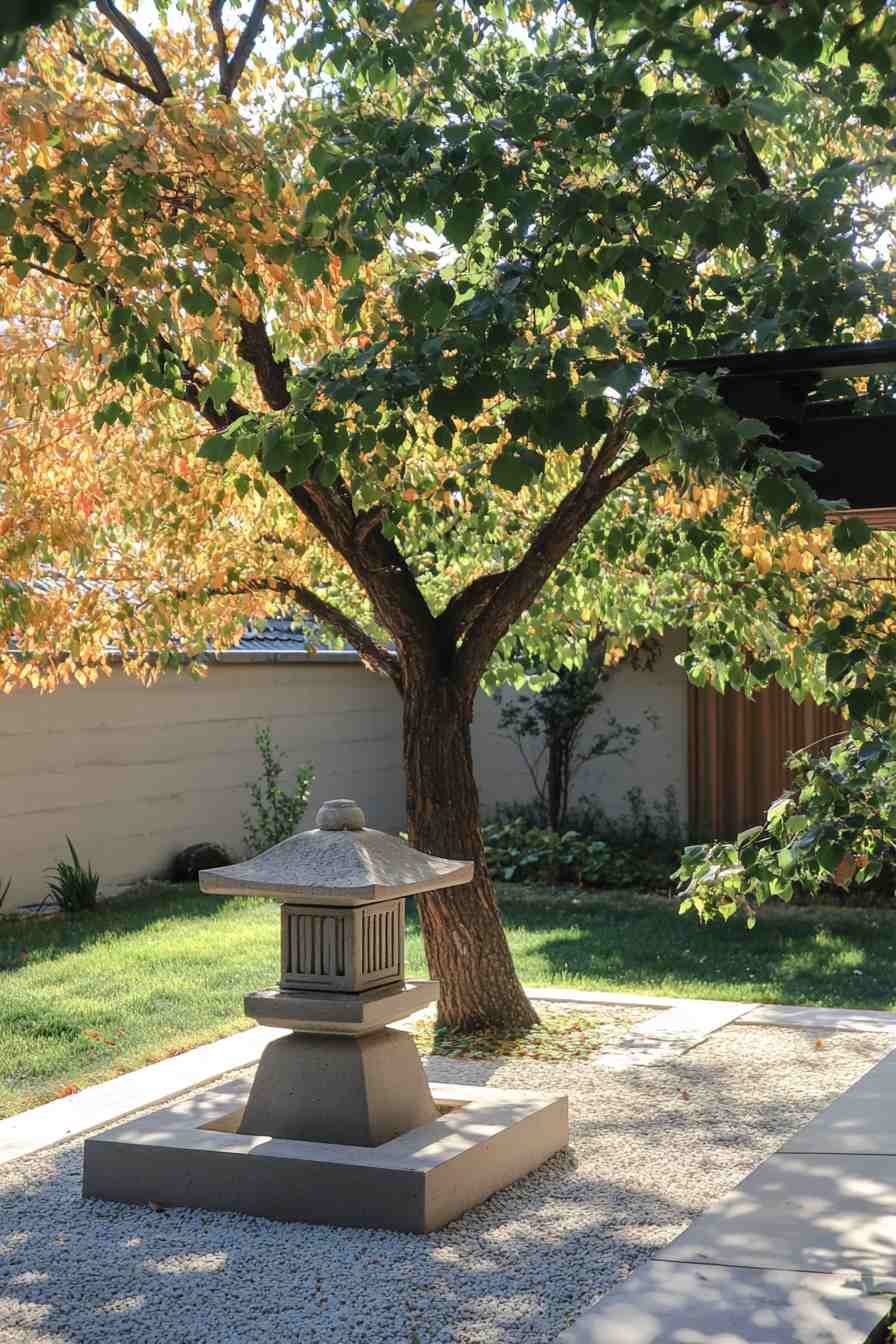
Conclusion
Concrete is no longer just a utilitarian building material—it’s a powerful design element that blends aesthetics with practicality. From bold sculptural pieces and serene water features to functional walkways and raised planters, concrete can revolutionize your garden into a space that looks high-end but requires little effort to maintain.
Whether your taste leans toward sleek modern lines or charming rustic touches, concrete provides endless opportunities to create a low-maintenance sanctuary that invites relaxation, not obligation. Start with one feature—perhaps a new path or planter—and watch how effortlessly concrete transforms the rhythm and elegance of your outdoor haven.
Frequently Asked Questions (FAQ)
Is concrete a good choice for all types of gardens?
Yes, concrete is versatile and works well in various garden styles—whether modern, tropical, Mediterranean, or minimalist. It can be shaped, textured, and colored to complement any landscape design. Its low-maintenance nature also makes it ideal for both large and small gardens.
How long does decorative concrete last in landscaping?
When installed correctly and sealed periodically, decorative concrete can last 30 years or more. It resists weather damage, pest infestations, and wear much better than materials like wood or loose gravel.
Can concrete be used sustainably in a garden?
When installed correctly and sealed periodically, decorative concrete can last 30 years or more. It resists weather damage, pest infestations, and wear much better than materials like wood or loose gravel.
Will concrete landscaping crack over time?
Small cracks can develop due to ground movement or temperature changes, but these can be minimized with proper installation, expansion joints, and reinforcement techniques. Periodic sealing can also prevent moisture penetration and cracking.
Is concrete slippery when wet in garden areas?
Smooth concrete can be slippery, but broom finishes, stamped textures, and anti-slip coatings can make it safe for walkways and patios. These treatments provide traction even when the surface is wet.
Can I install concrete planters or features myself?
Yes! DIY concrete planters and small sculptures are beginner-friendly and affordable to make with simple molds. For larger structures like patios or retaining walls, professional installation is recommended.
How do I clean and maintain concrete garden features?
Most concrete surfaces just need an annual power wash and re-sealing every few years. Avoid harsh chemicals; instead, use a mild detergent and water for general cleaning.
Can I change the color or design of my existing concrete garden areas?
Yes, concrete can be resurfaced, stained, or repainted with concrete-specific products. Decorative overlays can also refresh old concrete with new patterns or textures.

